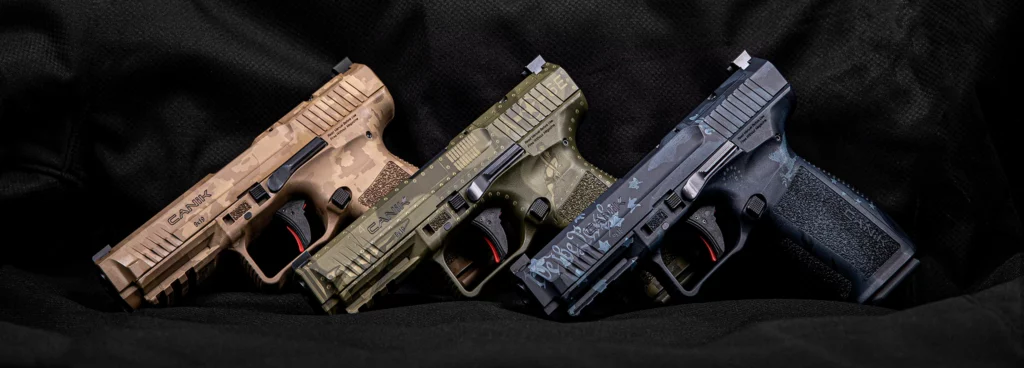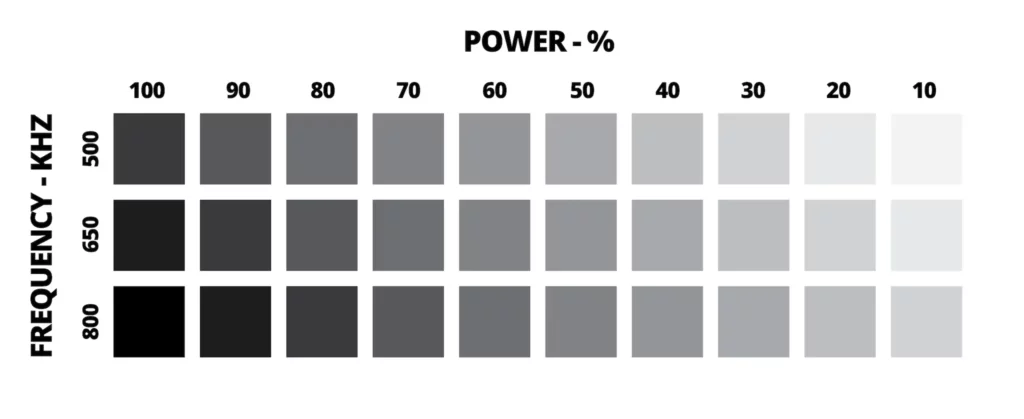Notizie
Cerakote Laser Imaging

IMMAGINE LASER
Il Cerakote Laser Imaging è un processo che produce diverse tonalità di colore da un singolo colore di Cerakote. Questo processo non incide, non ablaziona e non rimuove il rivestimento per rivelare un ulteriore strato di colore, né espone il substrato sottostante. Questo effetto permette di creare disegni sul pezzo cerato, lasciando intatta la protezione del Cerakote.
Le seguenti linee guida descrivono come creare una matrice di prova su un laser a fibra per il Cerakote Laser Imaging. Ogni marca, modello, potenza, ecc. del laser richiede impostazioni diverse per creare l'effetto di imaging desiderato. Questa procedura è un modo per iniziare a utilizzare il Laser Imaging sul proprio laser.
Ogni colore di Cerakote reagisce in modo diverso al processo di imaging. Alla fine di questa pagina è stato fornito un elenco dei colori consigliati.
METODO DI PROVA
Per il processo Cerakote Laser Imaging si consiglia un laser a fibra da 20-60 watt.
Il metodo di prova preferito che verrà illustrato in questa guida è il cosiddetto "test quadratico". Il metodo del test quadratico si basa sulla creazione di una griglia potenza/frequenza (Figura 1).
Come mezzo di prova si consigliano pannelli cerati (3" x 6"). Il test viene eseguito con frequenze e livelli di potenza diversi. Ogni volta che si esegue il test, è possibile utilizzare una diversa larghezza di impulso, spaziatura delle linee o velocità. La modifica di queste variabili consente all'utente di trovare le impostazioni più adatte alla propria macchina. Analizzare i risultati e ripeterli fino a ottenere il risultato desiderato.
In generale, lavorando con larghezze di impulso brevi, frequenze elevate e velocità più elevate si ottengono risultati migliori.

FIGURA 1: ESEMPIO DI MATRICE POTENZA/FREQUENZA. DA 500 A 800 KHZ È UNA BUONA GAMMA CON CUI INIZIARE.
METODI DI LASERATURA CERAKOTE
Di seguito vengono descritti tre diversi metodi per la laseratura del Cerakote.
- Rimuovere il Cerakote per rivelare il substrato sottostante.
- Rimuovere lo strato superiore di Cerakote per rivelare lo strato di base di Cerakote sottostante.
- Cambiare un singolo colore del Cerakote per produrre toni diversi. Questo processo è chiamato Cerakote Laser Imaging.
COLORI LASER CERAKOTE
Si noti che non tutti i colori sono ottimali per l'imaging laser. Di seguito è riportato un elenco di alcuni colori consigliati:
